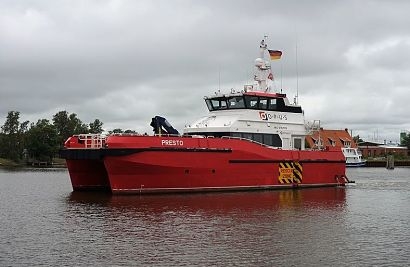
Guaranteeing maximum ‘time-on-turbine’ for technicians involves matching the challenges of servicing each asset site – inclusive of port depth, weather, sea conditions, and routing - to the vessel which performs best in those environments. Chartering a fleet that is well-matched to a specific project ensures that construction stays on track and operational assets are serviced quickly and efficiently – in contrast, the wrong vessel choice can result in reduced turbine access, excess fuel burn or technicians arriving at the site unwell and unfit to work.
However, the recent uptick in permitting and increase in development of projects sited to take advantage of high wind speeds further from shore has resulted in a shortage of the larger vessels most suited to these typically rougher sea conditions. As such, offshore project owners are responding by taking an in-depth look at vessel data to ensure they charter the right balance of CTVs to deliver the safest, most cost-effective service possible from the remaining vessels at their disposal.
“There is no one-size-fits-all support vessel for any single project owner, let alone any single geography or market” said Chris Huxley-Reynard, Managing Director of Reygar Ltd and creator of the BareFLEET advanced remote monitoring and reporting platform. “Every fleet is a reflection of the highly specific requirements of their projects, and so the ratio of vessel types that make up each fleet must be properly balanced or projects will go underserviced. Even so, project owners will not necessarily have access to the “perfect” vessel for their site. In these instances, in-depth analysis of vessel performance and health data drawn from sensors across the vessel and set in the context of wider environmental sea conditions is crucial to driving vessel selection. Project owners are using this vessel data to understand which of the vessels they have access to perform best across which site conditions, and are designing the make-up of the fleet based on a cost-benefit analysis of these results.”
Likewise, it is impossible to take a one size fits all approach to the data different project owners are basing their chartering decisions on. To be confident that they are making the best decisions for their projects and the technicians working on them, project owners need to be able to query vessel data in unique ways and develop their own metrics and key performance indicators. To reflect this, Reygar is evolving the BareFLEET advanced remote monitoring system to give users the power to do their own analytics, set KPIs, and report back in the way that best reflects their operational challenges and commercial priorities.
For additional information:

